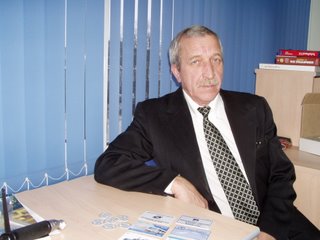The basis for this is simple. Suppose Vasya has an idea and thinks it will take 1 million pieces of gold to execute or at least begin his plan. He does not have this money and so he solicits those who do: banks, rich relatives, and corporate and institutional investment groups. They review his goal (typically a product or service) and his plan to achieve it, scrutinizing his track-record, his team, and the personal sacrifice or investment he has already contributed to his plan. The investor’s confidence in the entrepreneur and his plan, as well as his target market and the anticipated return on investment is weighed against other investment opportunities to determine whether to take a risk with him.
For each conference, a panel selected the most
Most of the companies were working on products (as opposed to services). The technologies included EDA tools for circuit development, CMOS image sensors, a biometric fingerprint reader, digital control of power conversion, reconfigurable processors, GaAs ICs for communications, low-power GPS chipsets and RFICs, storage processors, a content-processor to screen an incoming data path, quantum cryptology, and a variety of new router and transport technologies.
The solicitation of funding is an unusual scene for the uninitiated engineer. This forum was geared towards an audience, in which representatives from the start-ups, typically the CEOs, address groups of three to thirty. Amidst the crowd, their pitches target the investors or venture capitalists, who are not only valued for their financial support, but also for the power of their personal networks. The presentations all depict a novel device or service and portray a clean, simplified approach to reaching this goal and providing a hefty return on the investment.
At minimum, the presentations include an overview of the key management in the company and their backgrounds, a description of the product or service the company is developing, the work which has been done thus far, and if they are looking for money (some claim not to be) a description of what the money will be used for. A question and answer session usually follows in which questions about competitors, the core technology, implementation of the technology, and other issues are addressed.
Episodes vary. One presentation might offer only standing room to a late-comer. Some generate zero questions. Successful entrepreneurs generate lengthy queues of inquirers after their presentations and are asked to eventually move out of the conference room so that the next presentation may begin. Some executives are challenged with explaining how their company has managed to spend millions of dollars over the course of previous years and still not managed to reach critical milestones. Other presenters attempt to elicit interest while ducking direct questions about their trade secrets. (Typically, detailed information about new technologies is not revealed to casual spectators and small follow up meetings are arranged.)




